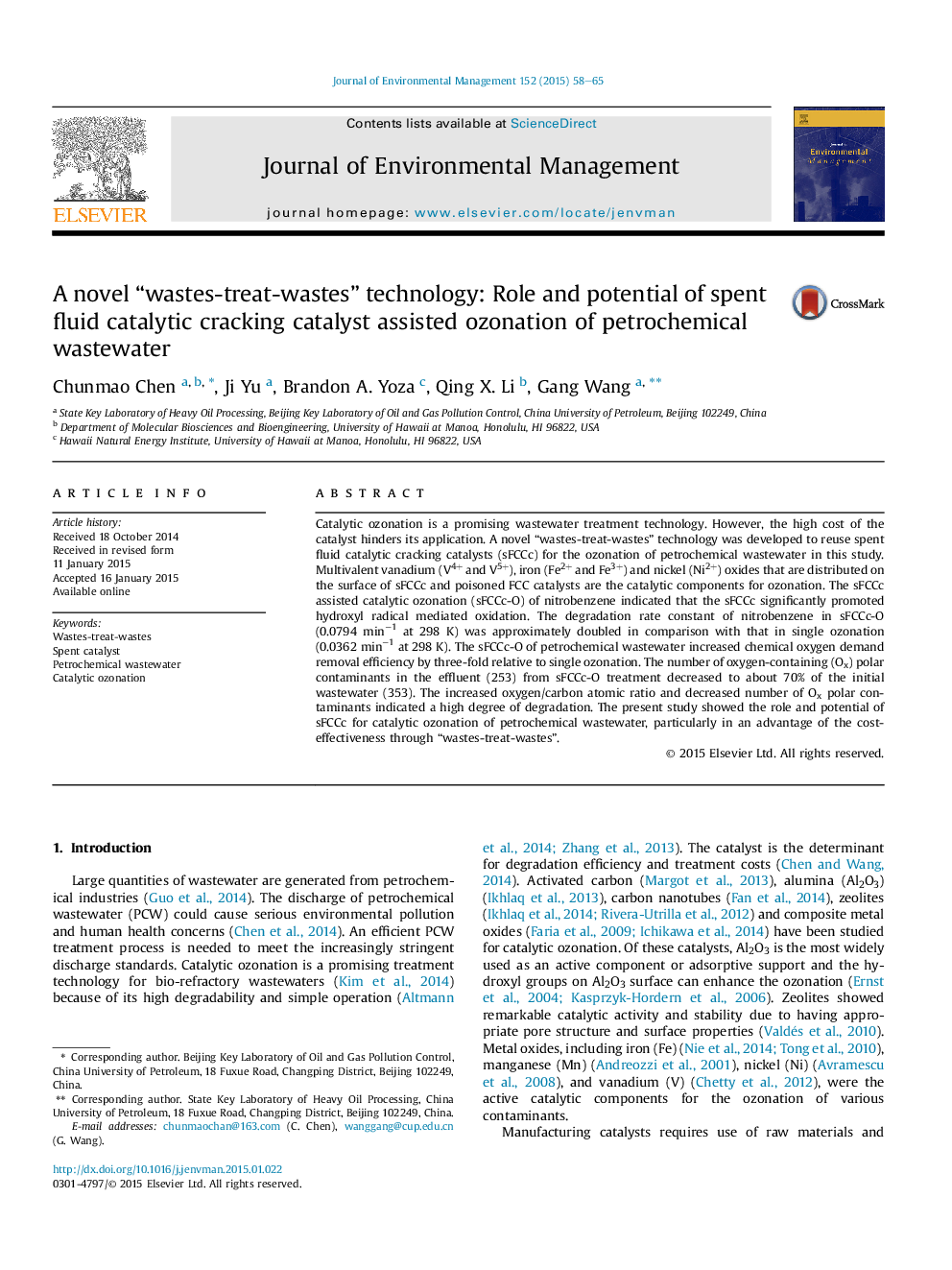| Article ID | Journal | Published Year | Pages | File Type |
|---|---|---|---|---|
| 7482455 | Journal of Environmental Management | 2015 | 8 Pages |
Abstract
Catalytic ozonation is a promising wastewater treatment technology. However, the high cost of the catalyst hinders its application. A novel “wastes-treat-wastes” technology was developed to reuse spent fluid catalytic cracking catalysts (sFCCc) for the ozonation of petrochemical wastewater in this study. Multivalent vanadium (V4+ and V5+), iron (Fe2+ and Fe3+) and nickel (Ni2+) oxides that are distributed on the surface of sFCCc and poisoned FCC catalysts are the catalytic components for ozonation. The sFCCc assisted catalytic ozonation (sFCCc-O) of nitrobenzene indicated that the sFCCc significantly promoted hydroxyl radical mediated oxidation. The degradation rate constant of nitrobenzene in sFCCc-O (0.0794Â minâ1 at 298Â K) was approximately doubled in comparison with that in single ozonation (0.0362Â minâ1 at 298Â K). The sFCCc-O of petrochemical wastewater increased chemical oxygen demand removal efficiency by three-fold relative to single ozonation. The number of oxygen-containing (Ox) polar contaminants in the effluent (253) from sFCCc-O treatment decreased to about 70% of the initial wastewater (353). The increased oxygen/carbon atomic ratio and decreased number of Ox polar contaminants indicated a high degree of degradation. The present study showed the role and potential of sFCCc for catalytic ozonation of petrochemical wastewater, particularly in an advantage of the cost-effectiveness through “wastes-treat-wastes”.
Related Topics
Physical Sciences and Engineering
Energy
Renewable Energy, Sustainability and the Environment
Authors
Chunmao Chen, Ji Yu, Brandon A. Yoza, Qing X. Li, Gang Wang,
